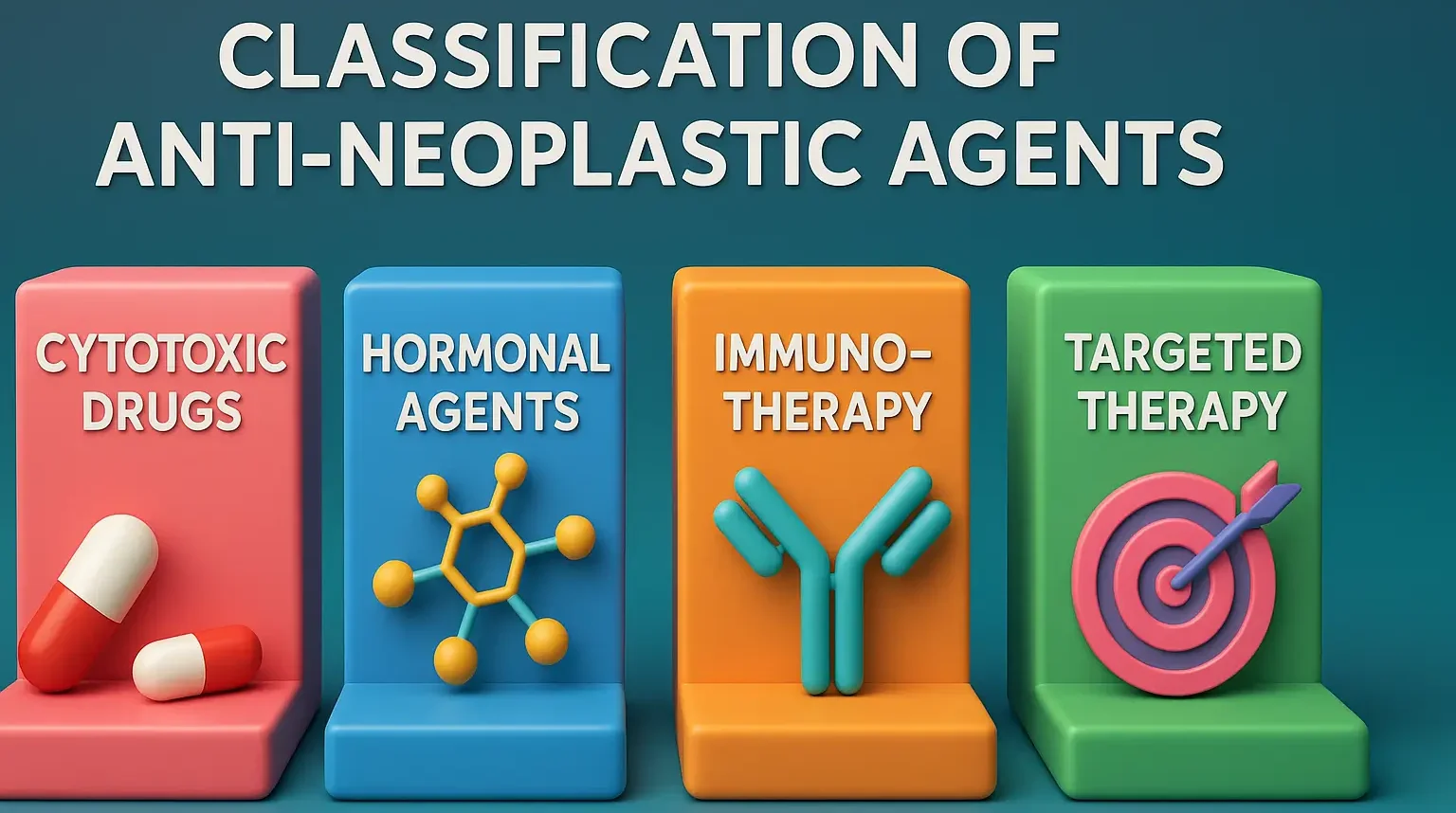Classification of anti-neoplastic agents based on mechanism and origin, targeting cancer cells and aiding effective cancer therapy.
Classification of Anti-Neoplastic Agents
- Anti-neoplastic agents are classified based on their mechanism of action and origin.
- The primary categories include:
-
Alkylating Agents
Mechanism:
-
- Add alkyl groups to DNA, causing cross-linking and preventing DNA replication and transcription.
Advertisements
Examples:
-
- Mechlorethamine
- Cyclophosphamide
- Melphalan
- Chlorambucil
- Busulfan
- Thiotepa
-
Antimetabolites
Mechanism:
-
- Resemble natural substances in cells, disrupting DNA and RNA synthesis by incorporating into the metabolic pathways.
Examples:
-
Antineoplastic Antibiotics
Advertisements
Mechanism:
-
- Interfere with DNA and RNA within cancer cells, inhibiting their growth and division.
- Note that these are not traditional antibiotics used for bacterial infections.
Examples:
-
Plant Alkaloids (Plant-Derived Products)
Advertisements
Mechanism:
-
- Derived from plants, these agents disrupt mitosis (cell division) or inhibit enzymes necessary for cell reproduction.
Examples:
-
- Etoposide
- Vinblastine Sulfate
- Vincristine Sulfate
-
Miscellaneous Agents
Mechanism:
-
- Includes drugs that do not fit into the above categories but are effective in cancer treatment.
Examples:
Click Here to Watch the Best Pharma Videos
Advertisements

